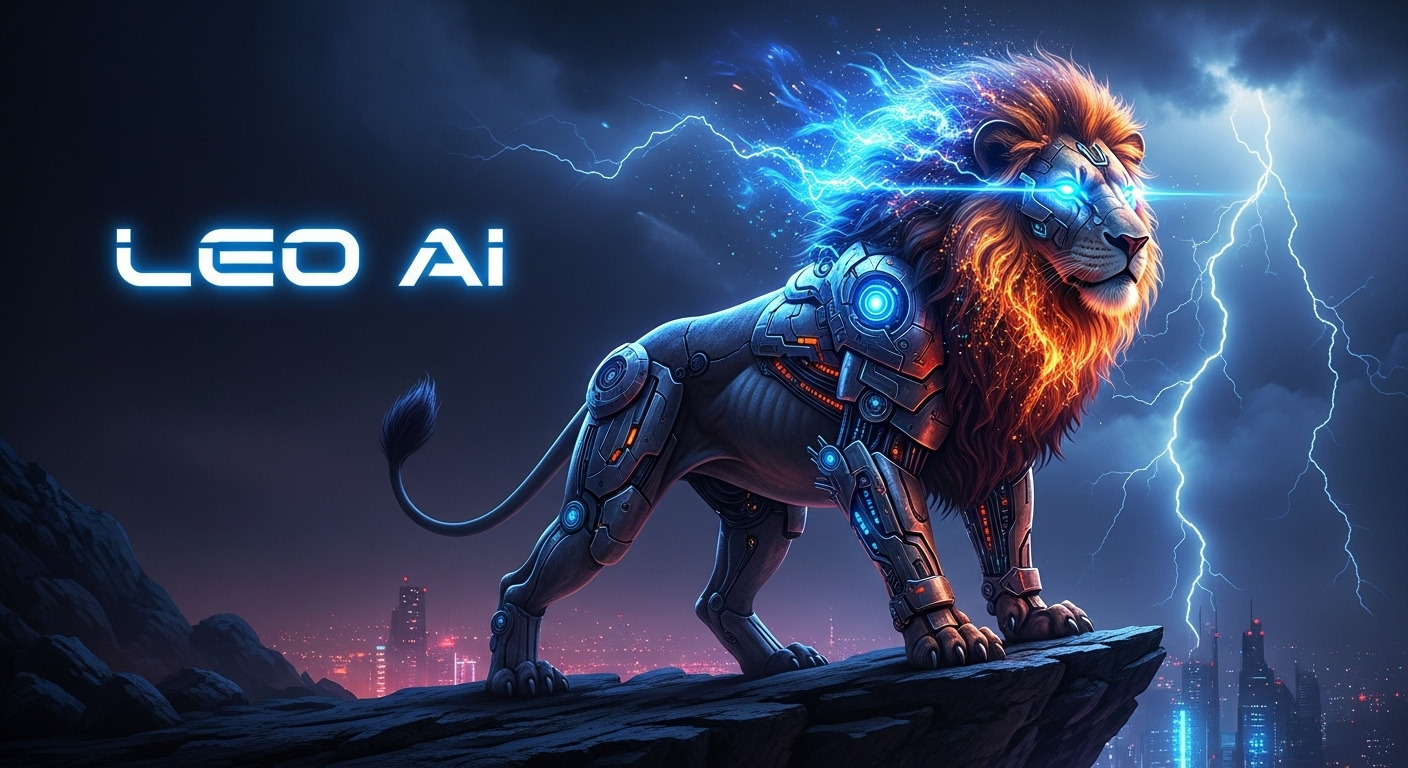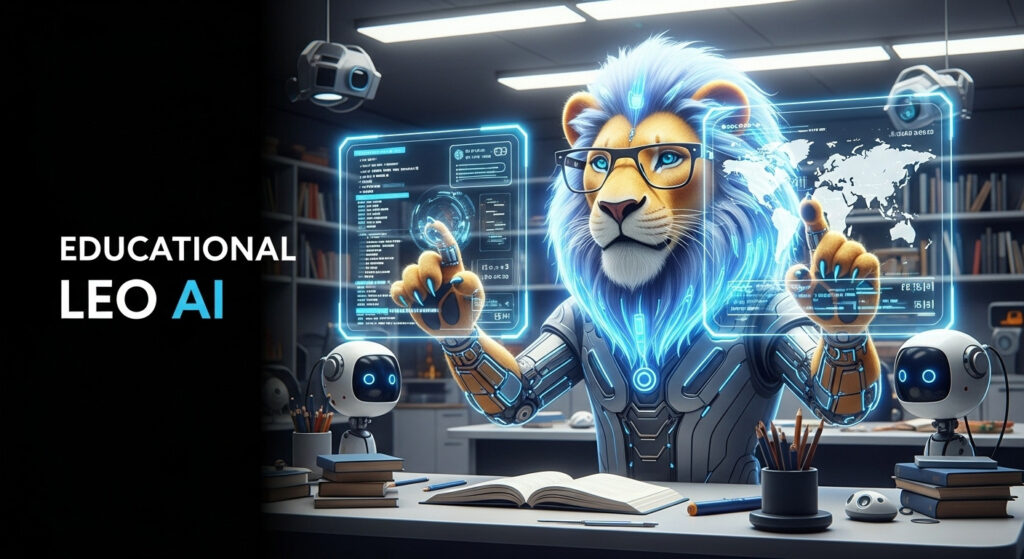
10 Best Nintendo Switch Games: The Ultimate Guide for 2025
- Gaming Updates

Leo AI represents not just one platform, but a collection of revolutionary artificial intelligence tools transforming multiple industries. From mechanical engineering design to browser-based assistance and educational support, Leo AI platforms are reshaping how professionals and students interact with technology in 2025.
This comprehensive guide explores the different Leo AI platforms, their unique features, pricing structures, and real-world applications. Whether you’re an engineer seeking design automation, a student needing homework assistance, or a professional looking for enhanced browsing capabilities, understanding these Leo AI solutions will help you choose the right tool for your needs.
The Leo AI landscape consists of several distinct platforms, each serving specific professional and personal needs. These AI-powered solutions share the common goal of enhancing productivity through intelligent automation and assistance.
The main Leo AI platforms include engineering design copilots, browser-integrated assistants, educational tools, and specialized industry solutions. Each platform leverages advanced machine learning algorithms to deliver targeted functionality.
Engineering Design Leo AI focuses on mechanical engineering workflows, transforming concepts into 3D CAD models. Brave Leo AI integrates directly into web browsers for enhanced browsing experiences. Educational Leo AI platforms assist students with homework and study tasks.
Leo AI’s engineering platform stands as the world’s first generative AI engineering design copilot, serving over 10,000 engineers globally. This sophisticated tool transforms text descriptions, sketches, specifications, and CAD constraints into complete, DFMA-optimized product assemblies.
The engineering Leo AI platform offers three primary solutions: Leo Ideation, Leo CAD, and comprehensive design optimization. Leo Ideation generates multiple design alternatives from basic concepts, while Leo CAD converts these concepts into detailed 3D models.
Technical Capabilities:
Companies using Leo AI’s engineering platform report up to 70% reduction in engineering time and costs. The platform’s ability to generate production-ready designs from conceptual inputs significantly accelerates product development cycles.
Manufacturing teams leverage Leo AI to streamline design iterations, reduce prototyping costs, and improve design manufacturability. The platform’s integration with existing CAD workflows ensures seamless adoption across engineering teams.
Brave Leo AI represents the first major browser-integrated AI assistant prioritizing user privacy. Built directly into Brave Browser, this AI companion offers conversational assistance without compromising personal data security.
Brave Leo AI provides real-time page summarization, content creation assistance, and intelligent search capabilities. Users can ask questions about webpage content, generate summaries, and create new content without leaving their browser.
Privacy Advantages:
Brave Leo AI offers access to various language models including Claude Sonnet, Claude Haiku, Qwen, and Llama variants. Each model provides different capabilities, from rapid response generation to complex reasoning tasks.
Users can switch between models based on their specific needs. Larger models like Qwen and Llama handle complex tasks requiring more computational power, while specialized models like Claude Haiku excel at specific use cases.
Related Articles: 630+ Best BTS ARMY Bio Ideas for Your Instagram & Whatsapp 2025
Educational Leo AI platforms focus on student support, offering homework assistance, study guidance, and academic resource management. These tools adapt to individual learning styles and academic requirements.

Educational Leo AI provides personalized tutoring, assignment help, and study schedule optimization. The platform analyzes learning patterns to deliver customized educational content and recommendations.
Academic Support Areas:
Leo AI educational platforms also serve educators through automated grading systems, curriculum planning assistance, and student progress analytics. Teachers report significant time savings in administrative tasks.
The platform grades hundreds of student submissions within minutes, allowing educators to focus on teaching rather than administrative work. Advanced analytics provide insights into class performance and individual student needs.
Beyond the main platforms, specialized Leo AI solutions serve specific industries including commercial insurance, creative content generation, and professional services automation.
Commercial insurance agents utilize Leo AI for lead generation, data analysis, and client relationship management. The platform provides instant access to X-dates, Worker’s Compensation data, DOT information, and OSHA compliance details.
Some Leo AI platforms focus on creative applications, offering image generation, video creation, and artistic content development. These tools leverage advanced generative AI models to produce high-quality visual content.
Different Leo AI platforms offer varying pricing structures and feature sets. Understanding these differences helps users select the most appropriate solution for their specific requirements.
| Platform | Primary Use | Key Features | Pricing Model |
|---|---|---|---|
| Engineering Leo AI | Mechanical Design | 3D CAD Generation, DFMA Optimization | Subscription-based |
| Brave Leo AI | Browser Assistant | Page Summarization, Privacy Focus | Freemium |
| Educational Leo AI | Student Support | Homework Help, Study Guidance | Monthly Plans |
| Specialized Solutions | Industry-specific | Custom Features | Variable |
Engineering professionals typically see ROI within the first month of using Leo AI design tools, primarily through reduced design iteration time and improved accuracy. Educational users benefit from improved academic performance and time savings.
Browser-based Leo AI users enjoy enhanced productivity without additional software installations. The privacy-focused approach appeals to security-conscious professionals and organizations.
Relatd Article: AI Dungeon: The Complete Guide to AI-Powered Text Adventures in 2025
Successfully implementing Leo AI solutions requires understanding your specific needs, evaluating platform capabilities, and planning integration workflows. Most platforms offer trial periods or freemium tiers for evaluation.
Start with clearly defined use cases and success metrics. Engineering teams should identify repetitive design tasks that benefit from automation. Students should focus on areas where AI assistance enhances rather than replaces learning.
Implementation Steps:
Users may initially struggle with prompt engineering and optimal AI interaction techniques. Most Leo AI platforms provide comprehensive documentation and training resources to address these challenges.
Integration with existing workflows requires careful planning. Successful implementations typically involve gradual adoption rather than complete workflow overhauls.
Leo AI platforms continue evolving with enhanced capabilities, expanded model options, and improved integration features. The engineering platform plans advanced simulation capabilities, while browser-based solutions explore deeper web integration.
Upcoming features include enhanced multimodal interactions, improved accuracy through expanded training data, and better integration with professional software ecosystems. Privacy enhancements remain a priority across all platforms.
The educational segment focuses on personalized learning algorithms and expanded subject coverage. Commercial applications explore industry-specific customizations and enterprise-grade security features.
Leo AI platforms focus on specific use cases rather than general-purpose applications. This specialization enables deeper functionality and better user experiences within targeted domains like engineering design, browser assistance, and education.
Yes, different Leo AI platforms serve complementary functions. Engineers might use the design copilot for professional work while utilizing Brave Leo AI for research and the educational platform for training purposes.
Privacy approaches vary by platform. Brave Leo AI emphasizes local processing and zero data retention, while professional platforms implement enterprise-grade security protocols. Always review specific privacy policies for your chosen platform.
Most Leo AI platforms design for ease of use rather than technical complexity. Engineering tools may require CAD knowledge, while browser and educational platforms offer intuitive interfaces for general users.
Yes, specialized Leo AI solutions serve industries including commercial insurance, creative content, and professional services. These platforms offer features tailored to specific industry workflows and requirements.
Leo AI platforms represent the cutting edge of specialized artificial intelligence applications. Whether you need engineering design automation, privacy-focused browser assistance, educational support, or industry-specific solutions, Leo AI offers targeted tools for enhanced productivity.
The key to success lies in matching platform capabilities with your specific needs. Engineering professionals benefit most from the design copilot’s technical features, while students and educators find value in specialized learning tools.
As AI technology continues advancing, Leo AI platforms position users at the forefront of innovation. Start exploring these powerful tools today to transform your workflows and achieve new levels of efficiency.
Ready to experience the future of AI-powered productivity? Visit the specific Leo AI platform that matches your needs and discover how artificial intelligence can revolutionize your work or studies in 2025.